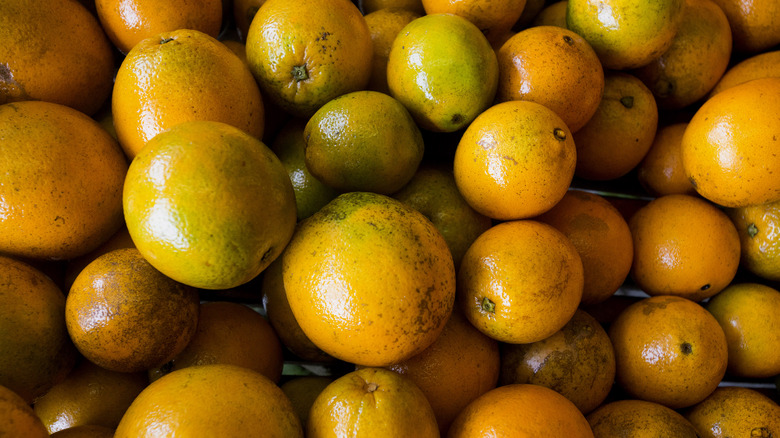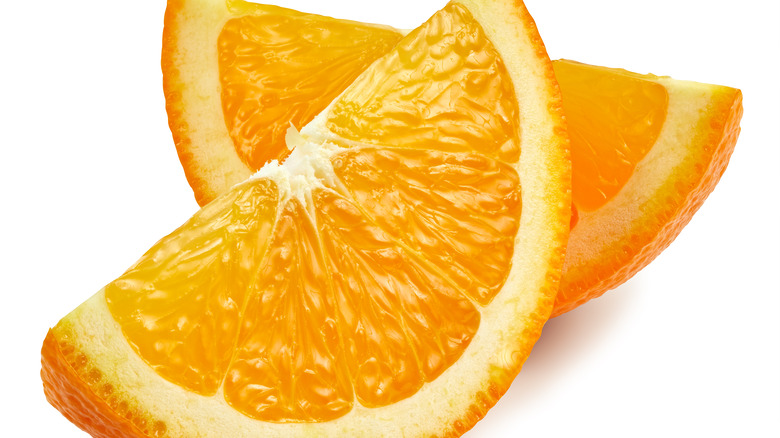How Many Oranges Does Florida Actually Produce?
Florida is known for its beaches, as a retirement destination for many Americans, and a diverse range of regional cuisines, including snapper and key lime pie. It is also valued for sunny days with balmy temperatures, and its vast regions of sandy soil are perfect for orange-bearing groves. There are a few varieties of oranges out there, and according to Visit Florida, The Sunshine State's fresh orange season starts in October and goes through June, producing navel, hamlin, pineapple, ambersweet, and valencia oranges.
Since the mid-19th century, oranges have been farmed at a commercial level in Florida, and the citrus powerhouse is second only to Brazil worldwide in terms of orange juice production. While it holds rank as the "world's leading producer of grapefruit," Florida's oranges also provide the juice for a whopping 90% of orange juice in the United States. But just how many oranges in total does Florida actually produce?
Florida makes tons of oranges
Per the WorldAtlas, the United States is the second leading producer of oranges in the world and takes up a 10% share of the earth's total orange production, with the last count in 2013 equating to 15.7 million tons. Florida provides the lion's share of US orange production, coming in at 70%, or close to an astonishing 11 million tons of oranges a year.
However, Florida's orange production has recently taken a dip, and according to Martha Stewart, production levels have been the lowest since the 1940s. While, on average, the state ships out over an impressive 240 million 90-pound boxes every year, in 2022, the estimate for Florida's orange output was a mere 44.5 million boxes. The reason for the shortage? A bacterial infection of orange trees results in bitter fruit rather than the sweet, pulpy oranges our palates are used to. Though supplies are down, the orange nectar is still more or less available. But if you'd like an alternative to orange juice, check out this recipe.

